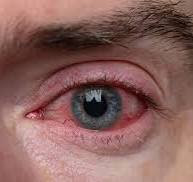Do people die of basal cell carcinoma?
OVERVIEW
The most prevalent kind of skin cancer is called basal-cell carcinoma (BCC), sometimes referred to as rodent ulcer, basal-cell cancer, or basalioma. It frequently manifests as a raised, painless patch of skin that may be glossy and has tiny blood veins running across it. It could also show up as an elevated, ulcerated region. Although basal-cell carcinoma can damage the surrounding tissue and grow slowly, it is unlikely to spread to other locations or cause death.
What's BCC?
- Basal cell carcinoma is curable in sun-exposed areas like the face and neck.
- It mostly affects epidermal basal cells. Basal cells are essential for skin regeneration and healing.
- BCC is called a rodent ulcer due to its sluggish growth and limited spread risk.
- It seldom extends beyond the skin, unlike melanoma.
- Sun exposure is the main cause of BCC.
- UV radiation from sunshine or tanning beds can cause BCC over time.
Who is more prone to getting basal cell carcinoma (BCC)?
- Age: BCC is more common in adults over 50.
- Fair skin is riskier.
- Sun exposure from outdoor activities, sunbathing,
- Employment in the sun.
- Previous BCC:
- Significantly more prevalent in men and newborn males.
- More common in light-eyed people (blue or green eyes).
- Although BCCs are not considered genetic, certain risk factors might run in families.
- Fair skin, freckling, and burning rather than tanning are examples.
- Genetic diseases like Gorlin syndrome can cause BCCs; however, they are rare.
Appearance:
- output: BCCs might vary in appearance. They may appear as:
- Shingles
- A bleeding, unhealed scab.
- New red or pearly skin lump.
- Some have a pearl-like rim surrounding a central crater,
- Others are superficial and scaly.
- Untreated, they can create ulcers, hence the name “rodent ulcers.”
Reason for Basal Cell Carcinoma?
- Sunlight and indoor tanning beds release UV radiation, which destroys DNA in basal cells, the skin's outermost layer. This damage can cause BCCs over time.
- Genetics affect UV skin response.
- Age and Skin Type: Later in life, skin gets thinner and less effective at repairing UV damage. The elderly are more at risk.
- Fair-skinned people, especially those who burn easily and infrequently tan, are more prone to BCCs.
- Immunosuppression: Medications or conditions that weaken the immune system can raise BCC risk.
- Skin cancer may occur in organ transplant recipients who take immunosuppressive medicines.
- Prior Skin Cancer:
- Having a BCC or other skin cancer raises your risk of getting another.
Basal Cell Carcinoma Signs
- BCCs tend to be persistent open sores that do not heal adequately. These lesions may bleed, leak, or crust.
- An open sore may last weeks or heal and reappear.
- Red, irritated patches:
- Watch for red spots on your face, chest, shoulder, arm, or leg. Irritated, crusty, itchy, or painful patches may occur.
- BCCs might look like benign pimples or sores, so don't ignore any unexpected changes.
- Shiny lumps or nodules:
- A flat, waxy region that resembles a scar may indicate BCC. The skin might be white, yellow, or waxy.
- Scar-like spots may signify invasive BCC.
- Check for tiny pink growth with a little elevated, rolled edge. The center indentation may be crusty.
- This growth may eventually create microscopic surface blood vessels.
How is basal cell carcinoma (BCC) detected and treated?
Skin Biopsy: A skin biopsy can confirm BCC and establish its subtype. This process involves sending a tiny lesion sample to a lab for pathological investigation. BCC type and skin cancer diagnosis are determined by the biopsy.
Treatment Options:
- Cancer location makes surgery difficult.
- You're too sick for surgery.
- Your lymph glands were invaded by cancer.
- Sometimes radiation is given after surgery to prevent recurrence.
- Targeted medicines and immunotherapy try to stop cancer growth, while immunotherapy aids in identifying and eliminating cancer cells.
- These drugs are available as skin lotions, pills, or IV infusions.
- They may be utilized if BCC is in many areas, has progressed deeper into the skin, or surgery or radiotherapy isn't possible.
- The photodynamic therapy technique employs a light-sensitive drug and a light source to specifically eliminate cancer cells.
- Photodynamic therapy works for thin, non-invasive, non-melanoma skin malignancies.
Post-op scarring
- Scar appearance and development: Initially, your scar may seem reddish. It gradually settles, becoming paler and smoother.
- The severity of the wound and your healing capacity can delay healing for two years or more.
- Initially, the stitch line where the incision was created after surgery, especially skin surgery, may seem red.
- Be prepared for elevated stitches in the first week.
- A soft pink color gradually replaces the redness over several months.
Scar Care:
- Scars can't be entirely removed; however, they can be improved.
- Massage: Aqueous or E45 cream should be gently massaged into your scar several times a day. Only do this once the wound heals.
- For at least a year, cover your scar in the sun. Protect it with clothing or a dressing.
- Sunscreen: Apply SPF 30 or higher straight to your scar in the sun.
- Skin camouflage: Use lotions and powders to hide your scar. They can be tailored to your skin tone and used efficiently.
- For assistance, visit your GP if your scar is unpleasant or bothersome.
- Urgently seek medical attention if your scar is swollen, painful, or heated to the touch.
- Showing infection indications (pus).
- Scars reveal perseverance and healing. Treat them well, and they'll fade gracefully!
Stages of BCC
Basal cell cancer prevention
- Use sunscreen with an SPF of 30 or higher when you are outside to protect yourself from the sun.
- Cover your face, neck, and ears.
- Find shade from 10 a.m. to 4 p.m. If outdoors, utilize shade or an umbrella.






